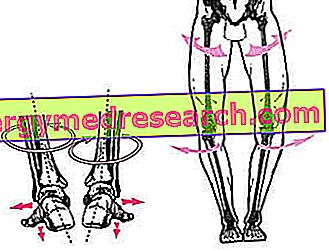Poor menstruation
Hypomenorrhea is a medical term that denotes scarcely abundant and generally short periods ; represents the phenomenon contrary to hypermenorrhea, and is often associated with an elongation of the intermenstrual period (oligomenorrhea).
Types of hypomenorrhea

When to worry
In general, if the scarce menstruation represents a sporadic or occasional condition, the woman must not worry too much about it. Hypomenorrhea, on the other hand, should cause serious concerns when it appears as a recurrent phenomenon, except, of course, for women who approach menopause.
Hypomenorrhea and menopause
Statistics show that mature women, near menopause, often complain of an irregular menstrual cycle, with a scarce abundant flow: in this case, hypomenorrhea, although frequent, should not generate anxieties: the body, in fact, is approaching at a time of remarkable transformation both from the physical and psychological point of view, since the climacteric (pre-menopausal period) represents the passage from the fertile age to sterility. Hypomenorrhea in women over 40 years of age could therefore herald the arrival of menopause, but this does not mean that the shortage of menstruation must be underestimated: it is always advisable to consult a doctor and, possibly, a control visit to ascertain that the hypomenorrhea does not depend on pathologies.
Related disorders
In women, all alterations affecting the menstrual cycle, including hypomenorrhea, can be a sign of ongoing diseases, including polyps, uterine myomas, cysts, etc. Hormonal and thyroid disorders, changes in glandular secretions and debilitating diseases can also cause hypomenorrhea. Obviously, when more than one of the aforementioned factors occur together in women, they could act synergistically increasing the chances of hypomenorrhea or any other alteration of the menstrual cycle. Synechiae (adhesions that interpose between the walls of the uterine cavities), lesions of the endometrium, inflammations and uterine hypo-sensitization could also be implicated in the appearance of hypomenorrhea.
It has been shown that patients who tend to suffer from hypomenorrhea at a young age are likely to have a poor development of the genital system, as well as a general one: in some cases, the genital organs present themselves as infantile ones (infantilism) .
Hypomenorrhea and advantages
Although the pathological value of the hypomenorrhea is almost relative, it must never be neglected: unfortunately, by some women, the hypomenorrhea is not even considered a disorder, but rather an almost pleasant phenomenon, given that they do not (almost) realize that they have menstruation. On the other hand, even the media advertise a lot of internal sanitary napkins, which, of course, are particularly suitable for women with a certainly not abundant menstrual cycle.
Difficulty at conception
Probably, the most "serious" problem associated with hypomenorrhea, with the exception of uterine tumors, is represented by a possible (but not fully demonstrated) difficulty in conception: in fact, the hypomenorrhea is an indication of an insufficient development of the mucosa of the uterus, whereby the fertilized egg encounters difficulty in implanting itself.
Care
The treatment aimed at resolving low-abundance menstruation should not be directed to the mere elimination of the most obvious symptom - hypomenorrhea in fact - but to the triggering factor, be it a tumor, a stress or an estrogenic alteration. When the menstrual cycle presents substantial irregularities, a gynecological check is absolutely essential: the doctor can then direct the patient towards a targeted treatment (eg hormonal treatment) to solve the problem.
Summary
Disorder | hypomenorrhea |
Description | Poorly abundant menstruation |
Related menstrual disorders | oligomenorrhoea |
Classification | Primary hypomenorrhea: appears due to an alteration of the uterine structure (rare case) or following hypoplasia of the uterus Secondary hypomenorrhea: poor menstruation is a consequence of psychophysical stress caused by substantial traumas (eg miscarriage, mourning etc.) |
Incidence | Women of childbearing age, mature women approaching menopause |
Causal factors | Alterations in the hormonal and thyroid structure, changes in glandular secretions, debilitating diseases, polyps, uterine myomas, cysts, synechiae. Endometrial lesions, inflammation and uterine hypo-sensitization. |
Possible complications |
|
Therapies against hypomenorrhea | Hormonal care |



